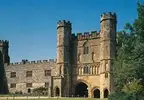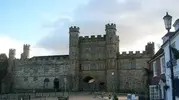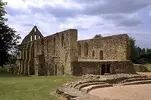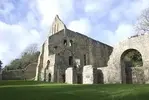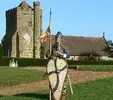Graveyard Hound
Member
A phantom fountain of blood is said to appear at this haunted abbey, constructed by William I on the site of his victory over king Harold at the Battle of Hastings in 1066. Normans called the site"Senllac", which means "Lake of Blood", and the ground supposedly sweats blood after a rain. The presence of iron in the soil probably accounts for the reddish puddles of water, however.
William built the abbey to atone for the slaughter of the defending Anglo-Saxons, and possibly, to express his thanks to God for the victory. Within the church, he constructed a High Altarr, on the spot where Harold fell. Only a fir tree stands there now. According to legend, the phantom of blood appears at this spot to commemorate the great amount of Christian blood that was shed at that battle.
When Henry VIII disolved the monasteries in 1536, and Sir Anthony Browne was given the abbey and received a curse from a supposedly unhappy monk for accepting it. The monk said Browne's name would be wiped from the land by fire and water. Browne inherited property,Cowdray Hall, which was passed down until it was destroyed by fire in 1793. A week later, the surviving male in the family line drowned in the Rhine and Browne's lineage came to an end.
A phantom has been seen at "Monk's Walk" at the abbey. Some believe it is the ghost of the monk that cursed Browne. Modern owners of the abbey believe it is the Dutchess of Cleveland, who rented the abbey for a time. In 1932, a ghost monk was seen in the crypt by two men holding a vigil there. The men also heard shuffling footsteps and creaking boards in the room above them, though it was paed with asphalt. They also heard a man's voive sining part of "Gloria in excelsis". Anthony D Hippisley Coxe, " HAUNTED BRITAIN"
William built the abbey to atone for the slaughter of the defending Anglo-Saxons, and possibly, to express his thanks to God for the victory. Within the church, he constructed a High Altarr, on the spot where Harold fell. Only a fir tree stands there now. According to legend, the phantom of blood appears at this spot to commemorate the great amount of Christian blood that was shed at that battle.
When Henry VIII disolved the monasteries in 1536, and Sir Anthony Browne was given the abbey and received a curse from a supposedly unhappy monk for accepting it. The monk said Browne's name would be wiped from the land by fire and water. Browne inherited property,Cowdray Hall, which was passed down until it was destroyed by fire in 1793. A week later, the surviving male in the family line drowned in the Rhine and Browne's lineage came to an end.
A phantom has been seen at "Monk's Walk" at the abbey. Some believe it is the ghost of the monk that cursed Browne. Modern owners of the abbey believe it is the Dutchess of Cleveland, who rented the abbey for a time. In 1932, a ghost monk was seen in the crypt by two men holding a vigil there. The men also heard shuffling footsteps and creaking boards in the room above them, though it was paed with asphalt. They also heard a man's voive sining part of "Gloria in excelsis". Anthony D Hippisley Coxe, " HAUNTED BRITAIN"

